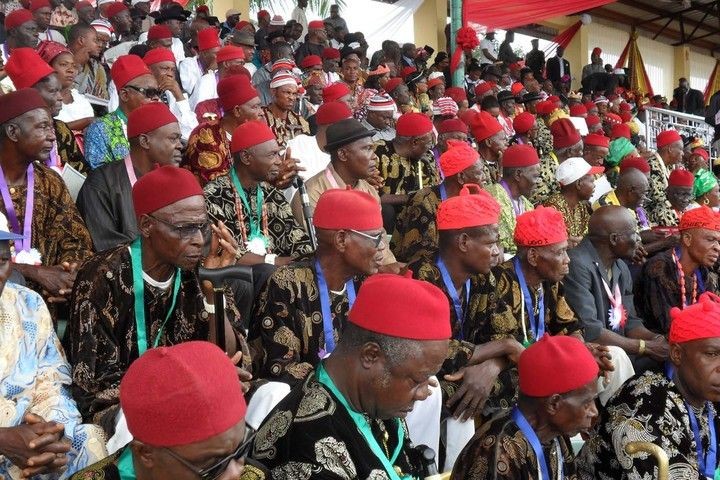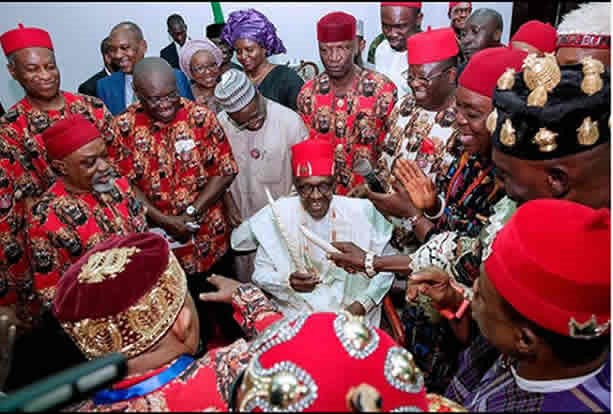Nestled in the heart of Eastern Nigeria, the iconic red cap, locally known as “Isiagu,” stands as a cultural beacon with a rich and enduring history. More than a mere article of clothing, it represents a symbol of authority, prestige, and cultural identity among the Igbo people. In this comprehensive exploration, we delve deep into the multifaceted significance of the red cap in Eastern Nigeria, tracing its historical roots and its role in preserving the vibrant Igbo heritage.
At its core, the red cap embodies a symbol of power and prestige within Igbo society. Reserved traditionally for titled chiefs, elders, and community leaders, it signifies their elevated social status and pivotal roles in governance and decision-making. Like a regal crown, it sets these individuals apart as guardians of tradition and culture, guiding their communities through the challenges of contemporary life while honouring the legacy of their ancestors.
The red cap is more than just a garment; it is a living canvas upon which the rich tapestry of Igbo culture and history is woven. Each cap is a work of art, adorned with intricate embroidery and symbols that narrate stories of the Igbo people’s journey through time. These symbols often include proverbs, clan motifs, and other meaningful designs that serve as a living archive connecting the present generation to their ancestral roots. Every stitch in the red cap is a testament to the enduring spirit of the Igbo people.
The red cap tradition has deep roots in Igbo ancestral customs and spirituality. Beyond its physical presence, it acts as a bridge between the living and the ancestors, forging a profound connection between generations. When donning the red cap during significant life events and rituals, individuals pay homage to their forebears, invoking their blessings and seeking their guidance. In this way, the red cap becomes a conduit for spiritual continuity and cultural preservation.
Eastern Nigeria is a mosaic of diverse cultures and communities, each contributing to the vibrant tapestry of Igbo culture. Consequently, the red cap has evolved, adapting to the unique traditions and regional nuances of different areas. These regional variations not only enhance the visual allure of the cap but also serve as a means of identifying the wearer’s specific clan or group. Thus, each red cap tells a distinct story, reflecting the diversity and richness of Igbo heritage.

In many Igbo communities, the bestowal of a red cap is a rite of passage into manhood or leadership. It marks a significant milestone in an individual’s life, signifying their attainment of a certain level of maturity and responsibility within the community. This transition is not a mere change in attire; it represents a transformational moment accompanied by ceremonies that honour the individual’s growth and potential contributions to society.
In contemporary times, the red cap has found its place in the realm of politics, amplifying its significance. Prominent Igbo politicians and leaders frequently adorn this distinctive headwear during political rallies and official functions. By doing so, they bridge the gap between traditional and modern authority, showcasing the enduring influence of this symbol in the political landscape of Eastern Nigeria.
The specific manner of wearing the red cap can vary depending on the occasion, the individual’s title or status, and regional customs. Here are some common ways in which the red cap is worn:

Regular Wear: In everyday life, the red cap is worn on the head like a regular cap or hat. It sits atop the wearer’s head and is often secured in place to prevent it from falling off.
Special Occasions: During special occasions, ceremonies, festivals, and cultural events, the red cap may be worn with particular attention to its positioning and style. It may be tilted at a specific angle or adorned with additional decorations.
Tilted to the Side: For some Igbo leaders and elders, especially during formal gatherings or ceremonies, the red cap may be tilted slightly to one side. The angle at which it is tilted can sometimes indicate the wearer’s rank or status.
Adornments: The red cap is often adorned with intricate embroidery, symbols, and designs. These adornments may vary depending on the wearer’s specific title or the significance of the event. The embroidered patterns can be a source of pride and convey cultural and historical messages.
Accompanied by Traditional Attire: The red cap is typically worn as part of traditional Igbo attire. It complements the overall ensemble, which may include garments like the “George” wrapper, traditional shirts, and accessories such as beads.
Rites of Passage: During significant life events, such as a man’s transition into adulthood or leadership, the red cap may be worn with particular attention to tradition and ceremony. The manner in which it is worn can carry specific cultural and spiritual significance.
Political Gatherings: In modern times, the red cap is often seen at political gatherings and events, especially when Igbo leaders or politicians wish to display their cultural identity while engaging in political activities.
The specific customs and traditions related to the wearing of the red cap may vary among different Igbo communities and regions, but its significance as a symbol of authority, culture, and heritage remains consistent throughout Igbo culture.
Amidst the rapid pace of change in the modern world, the red cap tradition remains a steadfast guardian of Igbo cultural identity. It serves as a tangible link to the past, a living testament to the resilience and endurance of Igbo heritage. In an era marked by globalisation and cultural assimilation, the red cap stands as a resolute marker of Igbo identity, fostering a sense of pride and unity among the Igbo people.
In the heart of Eastern Nigeria, the resplendent red cap, known as “Isiagu,” transcends its role as mere attire to become a living embodiment of Igbo culture, tradition, and identity. Through its vivid colours, intricate designs, and deep-rooted significance, it continues to be a source of pride, unity, and cultural continuity for the Igbo people. As the red cap graces the heads of leaders, elders, and individuals alike, it symbolises not only the past but also the enduring spirit of a people who celebrate their heritage with every stitch and every wear. In a world of change, the red cap remains an indomitable symbol of Igbo identity—a testament to the enduring legacy of a people who honour their past as they stride into the future.
Sources




